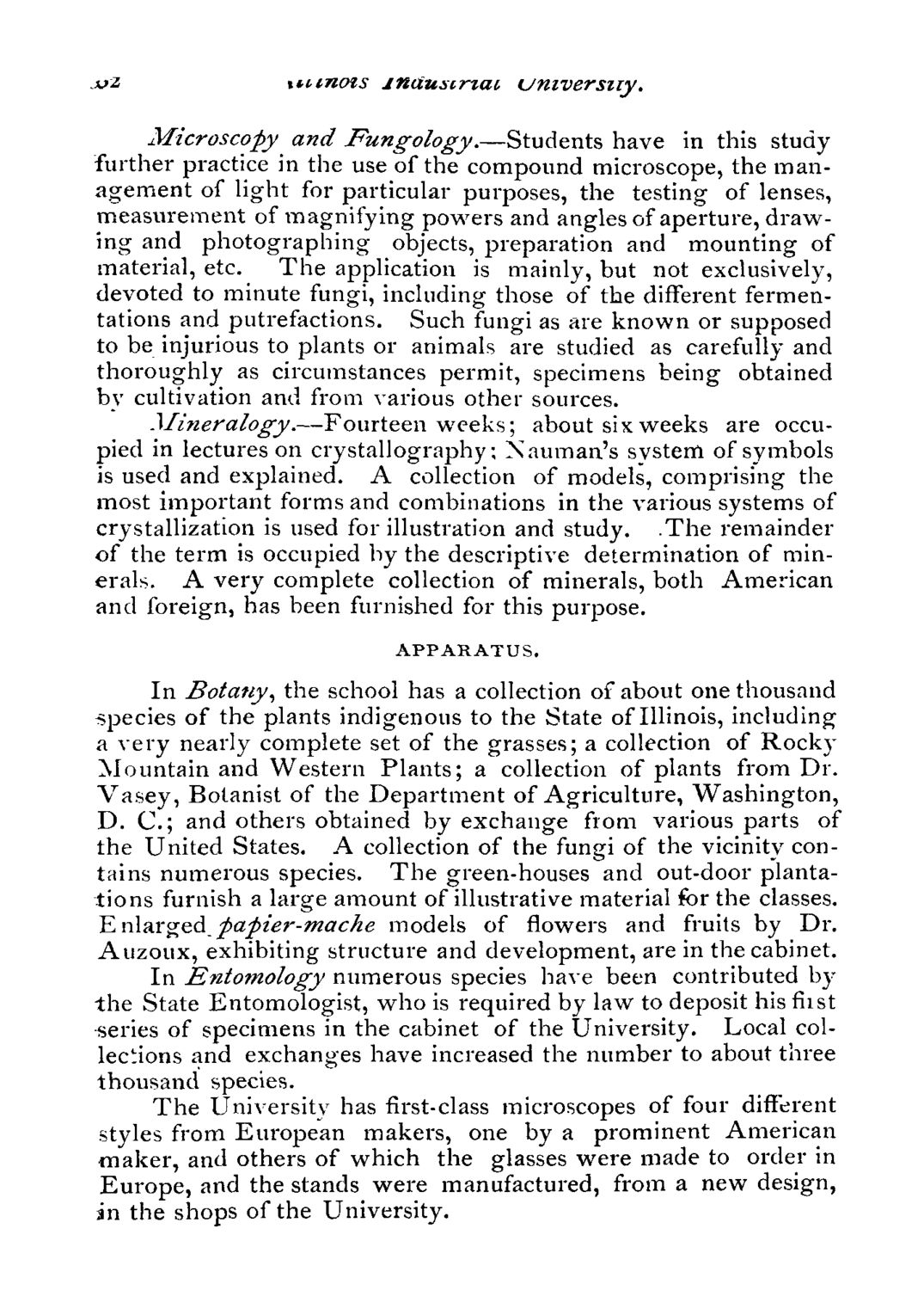| |
| |
Caption: Course Catalog - 1880-1881
This is a reduced-resolution page image for fast online browsing.

EXTRACTED TEXT FROM PAGE:
«z iinnots industrial university. Microscopy and Fungology.—Students have in this study further practice in the use of the compound microscope, the management of light for particular purposes, the testing of lenses, measurement of magnifying powers and angles of aperture, drawing and photographing objects, preparation and mounting of material, etc. The application is mainly, but not exclusively, devoted to minute fungi, including those of the different fermentations and putrefactions. Such fungi as are known or supposed to be injurious to plants or animals are studied as carefully and thoroughly as circumstances permit, specimens being obtained by cultivation and from various other sources. Mineralogy.—Fourteen weeks; about sixweeks are occupied in lectures on crystallography; Nauman's system of symbols is used and explained. A collection of models, comprising the most important forms and combinations in the various systems of crystallization is used for illustration and study. .The remainder of the term is occupied by the descriptive determination of minerals. A very complete collection of minerals, both American and foreign, has been furnished for this purpose. APPARATUS. In jBotany, the school has a collection of about one thousand species of the plants indigenous to the State of Illinois, including a very nearly complete set of the grasses; a collection of Rocky Mountain and Western Plants; a collection of plants from Dr. Vasey, Botanist of the Department of Agriculture, Washington, D. C ; and others obtained by exchange from various parts of the United States. A collection of the fungi of the vicinity contains numerous species. The green-houses and out-door plantations furnish a large amount of illustrative materialforthe classes. E nlarged fapier-mache models of flowers and fruits by Dr. Auzoux, exhibiting structure and development, are in the cabinet. In Entomology numerous species have been contributed by the State Entomologist, who is required by law to deposit his fiist series of specimens in the cabinet of the University. Local collections and exchanges have increased the number to about three thousand species. The University has first-class microscopes of four different styles from European makers, one by a prominent American maker, and others of which the glasses were made to order in Europe, and the stands were manufactured, from a new design, in the shops of the University.
| |